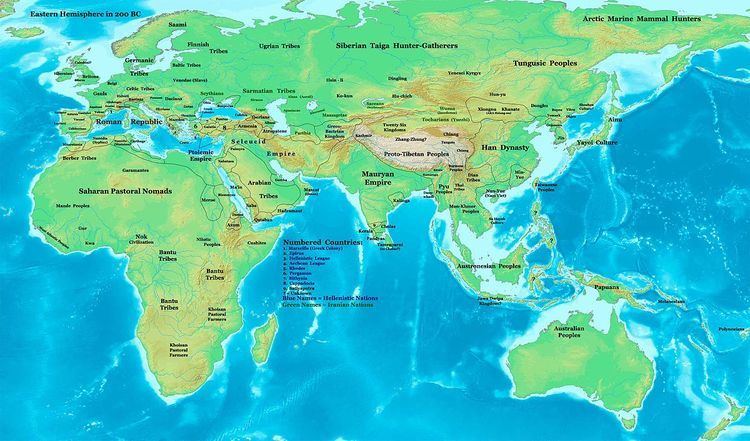 | ||
The 3rd century BC started the first day of 300 BC and ended the last day of 201 BC. It is considered part of the Classical era, epoch, or historical period.
Contents
- 290s BC
- 280s BC
- 270s BC
- 260s BC
- 250s BC
- 240s BC
- 230s BC
- 220s BC
- 210s BC
- 200s BC
- Politics and government
- Literature
- Science and philosophy
- Inventions discoveries introductions
- Sovereign states
- References
In the Mediterranean the first few decades of this century were characterized by a balance of power between the Greek Hellenistic kingdoms in the east, and the great mercantile power of Carthage in the west. This balance was shattered when conflict arose between Carthage and the Roman Republic. In the following decades, the Carthaginian Republic was first humbled and then destroyed by the Romans in the first and second Punic wars. Following the Second Punic War, Rome became the most important power in the western Mediterranean.
In India, Ashoka ruled the Maurya Empire. The Pandya, Chola and Chera dynasties of the classical age flourished in the ancient Tamil country.
The Warring States period in China drew to a close, with Qin Shi Huang conquering other nation-states and establishing the short-lived Qin dynasty, the first empire of China, which was followed in the same century by the long-lasting Han dynasty. The Protohistoric Period began in the Korean peninsula. The Xiongnu were at the height of their power in Mongolia.
290s BC
280s BC
270s BC
260s BC
250s BC
240s BC
230s BC
220s BC
210s BC
200s BC
Politics and government
Literature
Science and philosophy
Inventions, discoveries, introductions
Sovereign states
See: List of sovereign states in the 3rd century BC.
